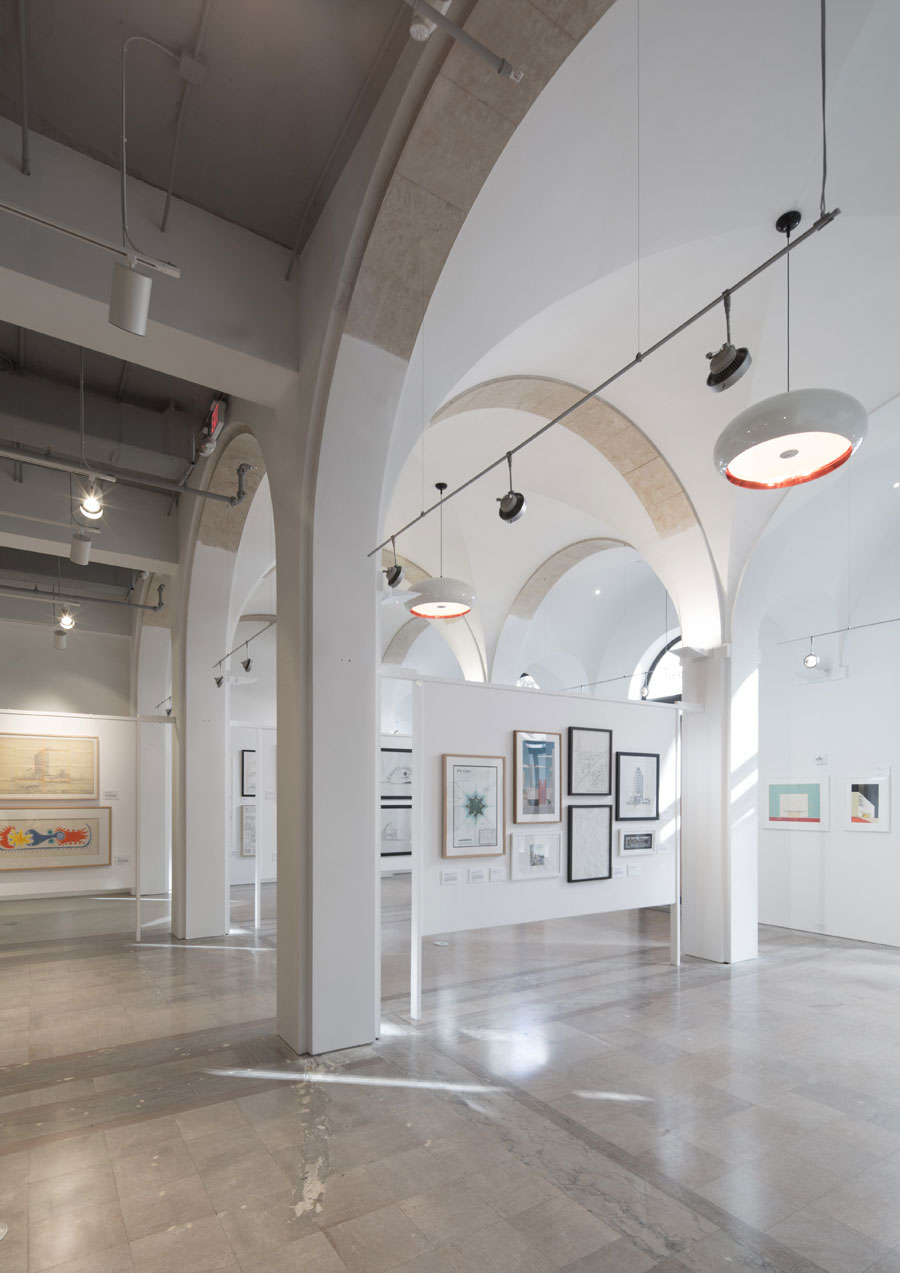December 6, 2013-February 7, 2014
Miami Center for Architecture and Design

Drawn from Miami presents a fascinating range of drawings by Miami architects and of Miami projects spanning almost 100 years. It focuses on hand drawings as opposed to digital and reveals the diversity and creativity of designers and artists as well as a range of drawing and project styles. Curators Allan Shulman, Nick Gelpi, Jake Brillhart, Jean-Francois Lejeune, and Terrence Riley rightly note in the introductory panel that to understand the image of Miami, the exhibit should include drawings of both built and unbuilt projects that created its increasingly cultural image. And if any city is about image, it’s Miami. There is no doubt that this exhibit grew from earlier ones in which Shulman and LeJeune were involved, including Interama at the Miami History Museum, and their knowledge of the archives shows here. They have sourced from university and museum archives, private collections, and collections of architects, with the drawing types ranging from fast, conceptual sketches, to sketchbooks, diagrams, design development, and renderings. Many of the drawings have not been previously exhibited or published, and the possibility of a catalog of these works is most welcome.
The curators chose not to organize the drawings chronologically, as one might expect, but by size, which creates some serendipitous moments of juxtaposition as modern and historical drawing in various media hang close enough for real comparison. The show is small enough to see quickly, but big and engaging enough to make you want to spend some real time with it. Some drawings, such as Rocco Ceo’s Overstreet Overlook, an intricately drawn work in colored pencil, beg for your nose to be inches away to truly appreciate the fine hatching and lines that create the texture of the River of Grass.
There is a bit of the sense of the “gang’s all here” in terms of architects who have left their marks on the city and its culture: Arquitectonica, Mark Hampton, Jorge and Luis Trelles, to name only a few. Alfred Browning Parker’s drawings capture the colors and sense of playful openness of postwar Miami, with the muted green background and aerial point of view of his “Wingspan” house for Mr. and Mrs. L. W. Rose (ca. 1950), a particular favorite. Morris Lapidus’s color rendering of a lobby of the Fontainebleau almost froths with golds and browns in an over-the-top, Rat-Pack-era decadence. Works by current architects are also included, as are drawings of landscape design, including examples by Roberto Burle Marx and an early sketch on yellow trace for the plaza area in front of 1111 Lincoln Road by Raymond Jungles, reminding you that it’s not just the buildings that make Miami, but also its unique landscape, climate, foliage, and outdoor lifestyle.
Not to be missed are the elegant ink on linen drawings by Schultze & Weaver of two of their Miami Beach hotels, which open the exhibit and harken back not just to a Miami of Mediterranean Revival but to another—and possibly lost—way of practicing architecture. Also of note are the intense creations by RodMau of a fantastical unbuilt Marine Museum on Key Biscayne that exult in the almost obsessive detail that ink on Mylar can produce. The sections and elevations are dominated by a suspended sphere filled with floating skeletons of aquatic life visible from a spiraling ramp.
The hand drawing is in many respects a dying art, with architects increasingly turning to the computer not just to produce working drawings but also for photo-realistic renderings and design sketches.Drawn from Miami celebrates the drawing as an artistic product of the architect and artist, and the pure aesthetic pleasure found in a drawing is the underlying subtext of the exhibit. You don’t have to be an architect or a resident of Miami to enjoy this exhibit; just be ready to spend some time to lose yourself in the places and times the drawings reveal.






